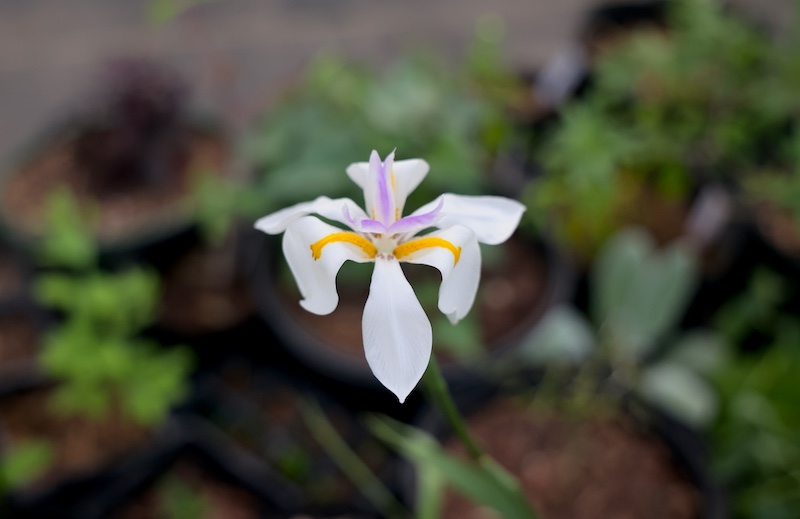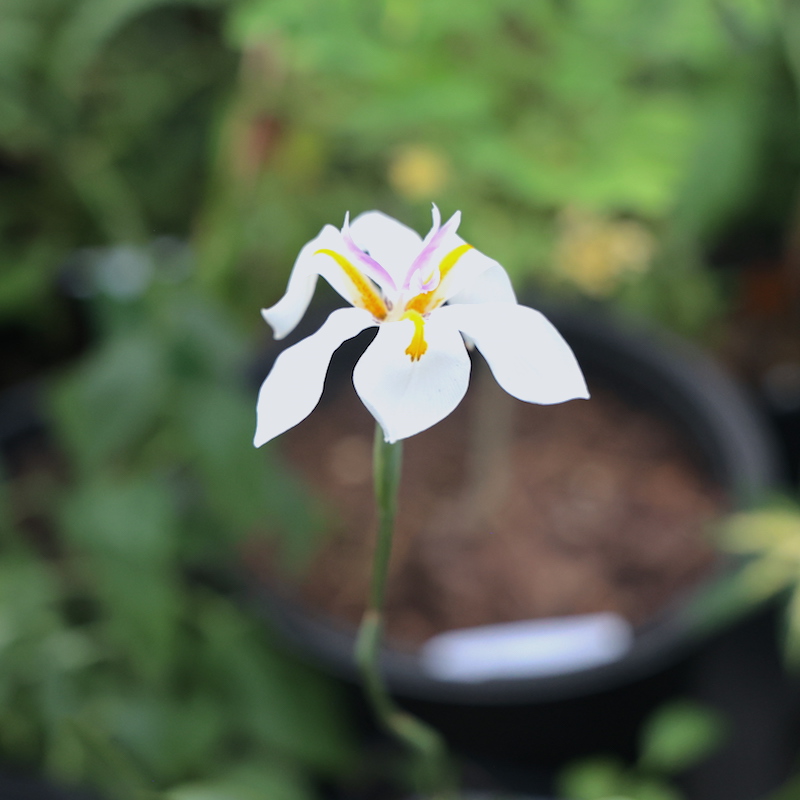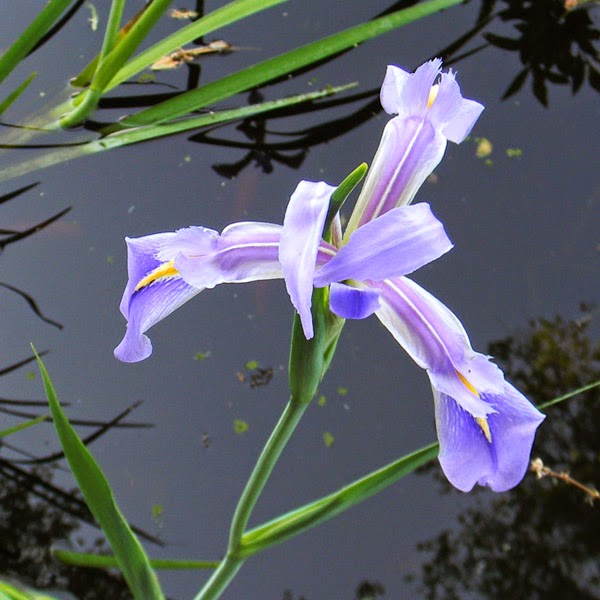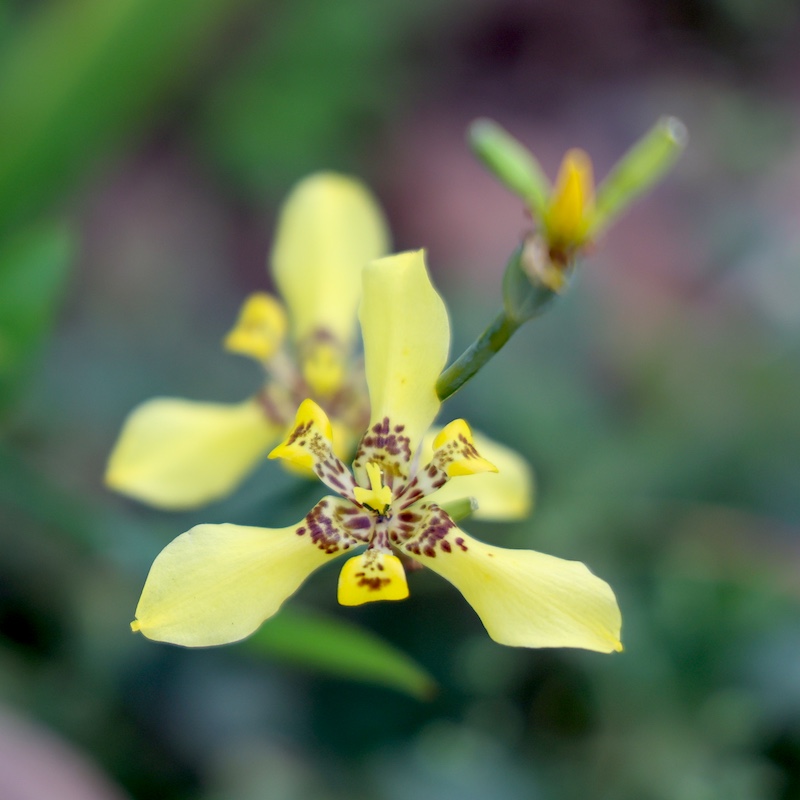A few months ago we were at a nursery.
This is a dangerous thing for a plant hoarder.
While there, I saw an overgrown pot labeled “African iris,” and picked it up. When I got home, I divided the clump and repotted multiple irises in other pots to give them some breathing room.
Yesterday when Rachel and I were in the greenhouse, she said, “Oh – David – look at this! It’s so beautiful!”
It was one of those irises, and it was truly lovely.
It’s very pure white, like the robes of an angel – and the gold and violet make it look quite royal. The species is Dietes vegeta, and according to IFAS, it grows especially well in standing water:
This clumping, robust perennial has stiff leaves radiating up and out in a fan-shaped pattern. The flower spikes are topped with 3inch white flowers marked with yellow and blue. Although short-lived (about 2 days), the flowers are produced sporadically throughout the year, especially in spring and early summer. Plants grow to 4 or 5 feet tall in standing water, making it ideal for water gardens and wet soil. They reach about 2 to 3 feet in soil. African iris is also attractive when used as an accent planted in a shorter groundcover.
Long ago, I accidentally planted an iris in my pond, when I was supposedly gathering cattails.
My parents had yellow irises in the front planter of our house when I was a kid, and they’re still there decades later.
I’ve planted a few species of irises in our food forest thus far and will add some more. We got a blue walking iris recently, as well as a “Red Velvet Iris” that bloomed in the nursery:
Though you can’t eat them, irises are easy to grow and add joy to the garden.
Sometimes, that’s good enough.





